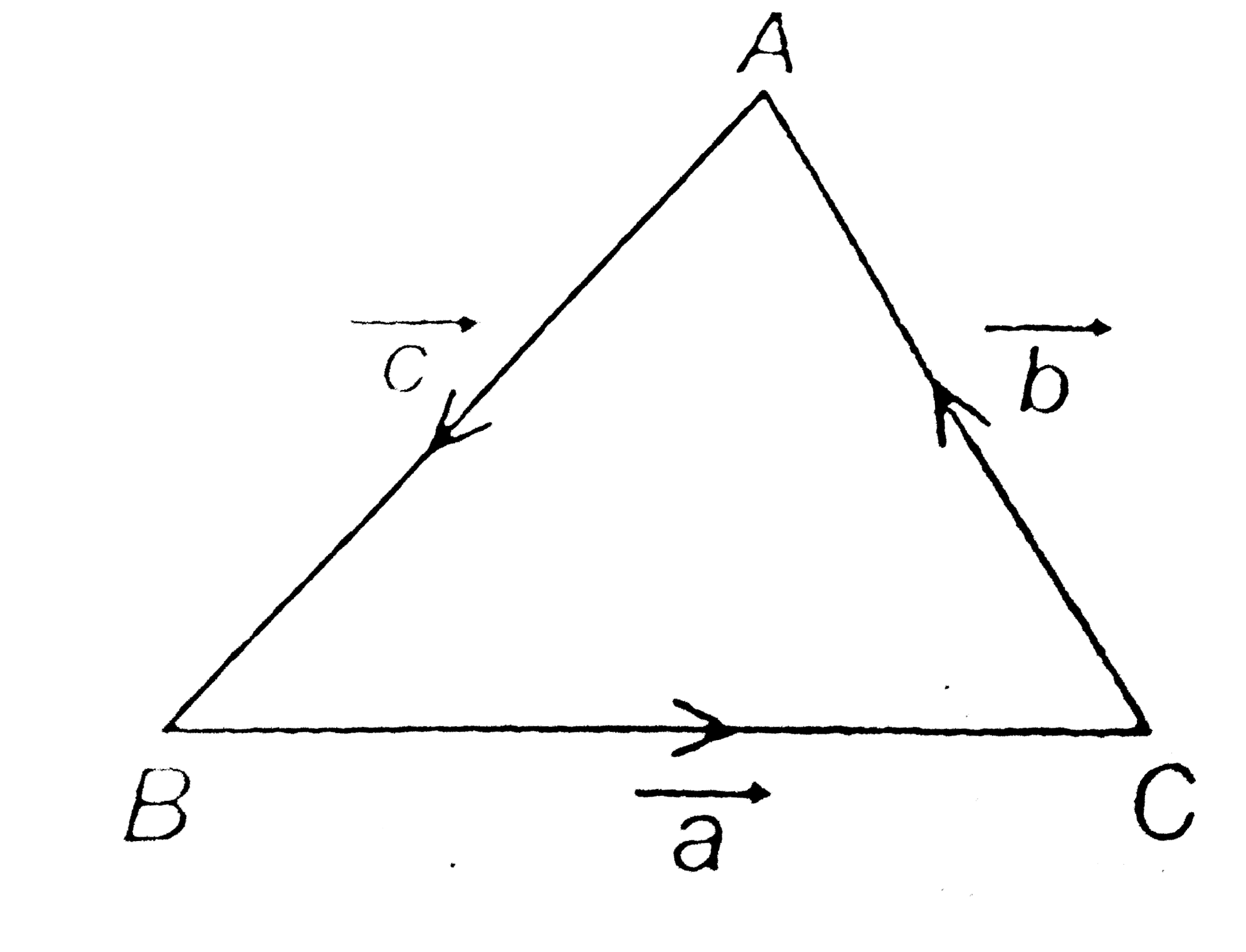Prove that when the sides of a triagle are taken in order, it leads to zero resultant.
Let ABC be a triangle such that
−−→BC=→a,−−→CA=→b and −−→AB=→c. Then,
⇒→a+→b+→c=−−→BC+−−→CA+−−→AB
⇒→a+→b+→c=−−→BA+−−→AB {Since−−→BC+−−→CA=−−→BA}
⇒→a+→b+→c=−−→BB [By triangle law]
⇒→a+→b+→c [By def. of null vector]
Hence ⇒→a+→b+→c=0
⇒−−→AB+−−→BC+−−→CA=→0
∴ When the sides of triangle are taken in order it leads to zero resultant.

Topper's Solved these Questions
- BOOK - AAKASH INSTITUTECHAPTER - VECTOR ALGEBRAEXERCISE - ILLUSTRATION1videos
VECTOR ALGEBRA
- BOOK - AAKASH INSTITUTECHAPTER - VECTOR ALGEBRAEXERCISE - TRY YOURSELF20videos
VECTOR ALGEBRA
- BOOK - AAKASH INSTITUTECHAPTER - TRIGNOMETRIC FUNCTIONS EXERCISE - Section - J (Akash Challengers Question)15videos
TRIGNOMETRIC FUNCTIONS
Similar Questions
Assertion: The minimum number of vectors of unequal magnitude required to produce zero resultant is three.
Reason: Three vectors of unequal magnitude which can be represented by the three sides of a triangle taken in order, produce zero resultant.View SolutionForces each equal to P act at a point parallel to the sides of a triangle ABC, taken in order, then their resultant is given by R2=P2(3−2cosA−2cosB−2cosC)
View Solution
Knowledge Check
- Question 1 - Select One
The direction of three forces 1N, 2N and 3N acting at a point,are parallel to the sides of an equilateral triangle taken in order. The magnitude of their resultant is:
A0B√32NC32ND√3N - Question 2 - Select One
The direction of three forces 1N, 2N and 3N acting at a point,are parallel to the sides of an equilateral triangle taken in order. The magnitude of their resultant is:
A√3NB√32NC32NDZero - Question 3 - Select One
The quadrilateral formed by joining the midpoints of the sides of a quadrilateral ABCD, taken in order, is a rectangle, if
AABCD is a parallelogramBABCD is a rectangleCdiagonals of ABCD are equalDdiagonals of ABCD are perpendicular to each other
If →a, →b, →c represent the sides of a triangle taken in order, then write the value of →a+→b+→c
View SolutionA particle is acted on by forces 1, 2,3 and 4 N parallel to the side of a rectangle taken in order. Find resultant.
View SolutionFifteen vectors, each of magnitude 5 units, are represented by the sides of a closed polygon, all taken in same order. What will be their resultant ?
View SolutionProve that sum of any two sides of a triagle is greater than twice the median with respect to the third side.
View SolutionThree forces P, Q, R act along the sides BC, CA, AB of a triangle ABC taken in order :
Write the conditions so that the resultant passes. Through
the incentre, ………View Solution

